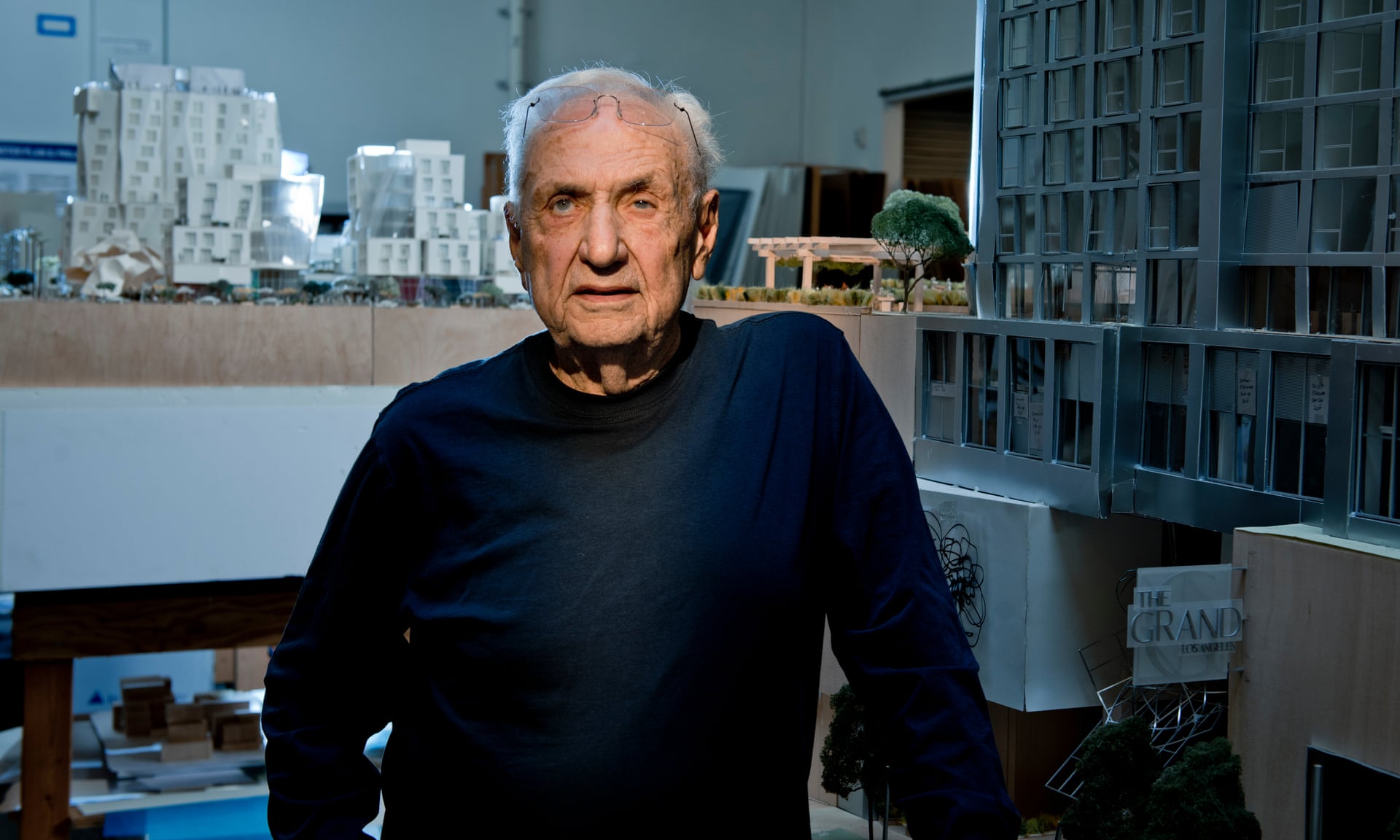
By Jjron – via Wikipedia
Frank Gehry, the illustrious Los Angeles architect famous for designing buildings composed of curves, jagged metal surfaces and broken lines that magically join into graceful, inspiring forms, just turned 90 years old. Still very much active in the field, he credits his well-being to never ceasing to work at what he loves – architecture. Gehry’s career spans decades, and he has produced some amazing structures, some of which we will feature right after this fun fact about Gehry’s practice: he loves fish!
“In Toronto, when I was very young, my grandmother and I used to go to Kensington, a Jewish market, on Thursday morning. She would buy a carp for gefilte fish. She’d put it in the bathtub, fill the bathtub with water, and this big black carp–two or three feet long–would swim around in the bathtub and I would play with it. I would stand up there and watch it turn and twist.”
We can definitely see this fondness in the scaly, shimmery surfaces of many of Gehry’s buildings, and we wonder if we will glimpse it in his upcoming project on the LA River – Los Angeles County hired Gehry to work up a master plan for the restoration and revitalization of the river. We can’t wait to see what Mr. Gehry thinks up – and if you, like us, are a fan of LA River, you should check out CoolidgePlaceLA, a collection of new modern single families just blocks from the water.
Curious to know more about Frank Gehry? Read on to find out about the career journey of this prolific architect and inspiring human.

BP Pedestrian Bridge in Chicago (2004) | Curbed LA
- Born in Toronto on February 28, 1929 to Jewish parents, the architect was given the name of Ephraim Owen Goldberg. Concerned about anti-semitism, the Frank’s first wife insisted on a name change and Goldberg became Gehry.

Biomuseo, the Museum of Biodiversity, in Panama City, Panama (2014)|Curbed LA
- When he was 17 years old, Gehry and his family moved to Los Angeles. After working as a truck driver for a furniture company, Frank studied architecture at Los Angeles City College and the University of Southern California’s School of Architecture. Afterwards, Gehry took a job with Victor Gruen, an Austrian architect that pioneered the design of first pedestrian malls and shopping centers.
- At 30, Gehry enrolled at Harvard University. Upon graduation and after several years of work at various firms, Frank traveled to Paris. There, he worked on restoration of French churches, and in his free time studied the works of Le Corbusier and Balthasar Neumann.
- In 1962, enthusiastic Gehry returned to Los Angeles and opened his studio, Frank O. Gehry and Associates. He designs shops and shopping centers in the style of Gruen. After a few years, the architect decided to take a break from buildings and delved into furniture design.
- For 4 years, Gehry focused on designing corrugated cardboard furniture, having realized that the combination of unusual materials and thoughtful design can produce a sensational effect. The success of his furniture project inspired Gehry, and he returned to architecture in search of his unique style.

Frank Gehry in front of his Santa Monica home | NY Times
- In 1978, Gehry was working on his passion project, his house in Santa Monica – which quickly became overgrown with extensions of irregular shape home of metal grids and corrugated fiberglass. Rumor has it that his neighbors were concerned that the wildly shaped structure would bring down the real estate prices, but history certainly proved them wrong! Gehry was 50, and he was just getting started.
Gehry’s path that took him all over the world and he would leave magnificent buildings in his wake – some with profound economic consequences, his Guggenheim Museum resulting in what came to be known The Bilbao effect, in which “world-class project became the catalyst for reviving this once gritty, economically distressed, post-industrial city”. Gehry’s list of accomplishments is long, but none could speak better about it than himself – learn about his fascinating life by tuning into this NYPL interview from 2009 and catch up with the master with this recent feature by The Guardian.

Frank Gehry photographed at his Los Angeles offices. Photograph: Barry J Holmes/The Observer

